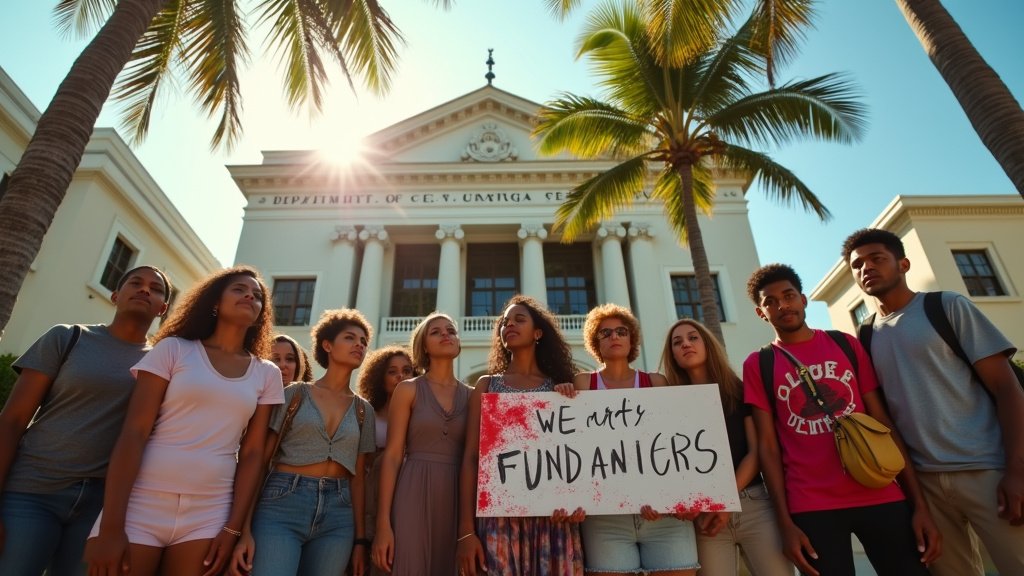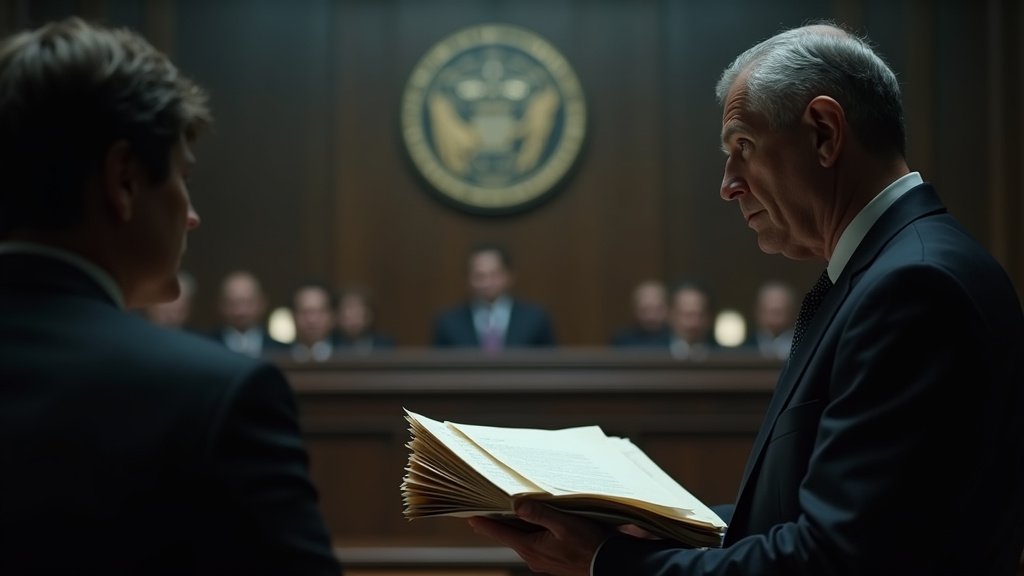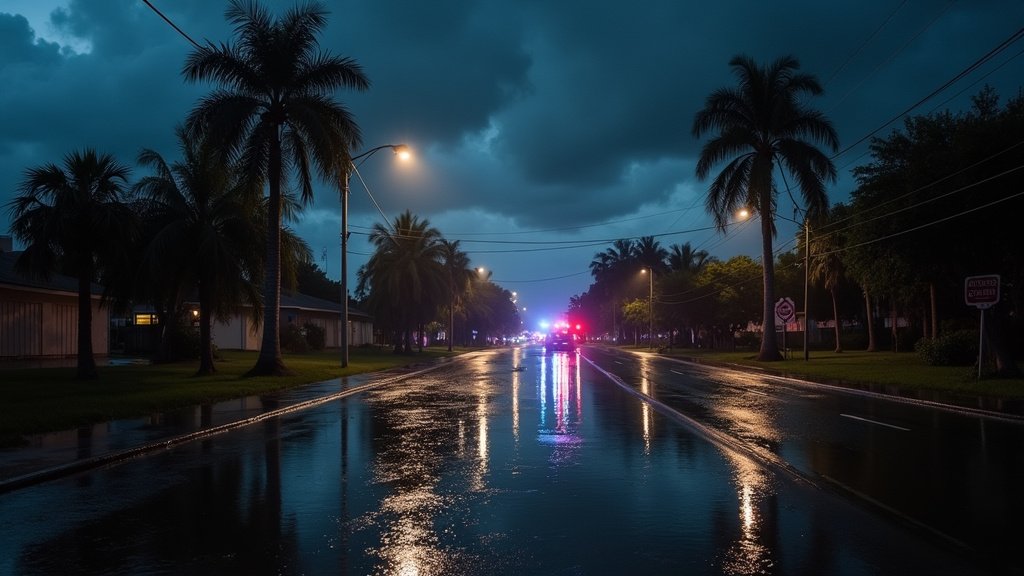Miami’s vibrant arts scene, a significant economic engine and cultural cornerstone, is grappling with an unprecedented wave of funding challenges stemming from federal, state, and local budget cuts. Despite these formidable obstacles, arts organizations across the county are demonstrating remarkable resilience, adapting strategies, and rallying community support to continue their vital work. This period of intense financial strain has ignited widespread advocacy, underscoring the essential role arts play in Miami’s identity and economy.
A Multi-Faceted Funding Crisis Grips Miami Arts
The current predicament for Miami’s cultural sector is a confluence of decisions made at various governmental levels. At the federal level, the Trump administration’s proposed elimination of the National Endowment for the Arts (NEA), alongside the National Endowment for the Humanities (NEH) and the Institute of Museum and Library Services (IMLS), sent shockwaves through the sector. Adding to this national uncertainty, the NEA began rescinding previously approved grants, disrupting programming plans for numerous institutions nationwide.
On the state front, Florida Governor Ron DeSantis made a decisive move in June 2024 by vetoing $32 million in arts and culture funding for the 2024-25 fiscal year, an action that eliminated most state grants for arts organizations. DeSantis cited objections to perceived “sexual” or “inappropriate” programming funded by taxpayer dollars, specifically referencing fringe festivals. This broad veto left hundreds of Florida arts groups, many still recovering from pandemic-era losses, scrambling to fill significant budget holes. Organizations like the Coral Gables Art Cinema and Miami New Drama reported unexpected shortfalls of over $100,000, highlighting the immediate and substantial impact of the state’s decision.
The most recent and impactful blow came from within Miami-Dade County itself. Facing a substantial $400 million budget deficit, partly attributed to the winding down of federal COVID-19 relief funds and the creation of new constitutional offices, Mayor Daniella Levine Cava’s initial proposed budget for fiscal year 2025-2026 included a staggering 52% cut to cultural arts grants, equating to $12.8 million. Even more alarming was the proposal to eliminate the Miami-Dade County Department of Cultural Affairs as a standalone entity, merging it into the Public Library System and eliminating the director’s position. This move was decried by arts leaders as a “cultural catastrophe” and an “existential threat.”
Economic Engine Threatened, Community Rallies
The arts and cultural sector is not merely an amenity; it is a robust economic driver for Miami-Dade County. According to reports, the nonprofit arts and culture industry generates approximately $2.1 billion in local economic activity annually and supports over 32,000 jobs. Arts organizations also contribute significantly to the visitor economy, attracting cultural tourists and generating public revenue. The proposed cuts threatened to dismantle decades of investment and jeopardize this vital economic ecosystem.
The impact on individual organizations has been severe. Groups like City Theatre and Miami Light Project have reported staff furloughs, program cancellations, and scaled-down productions. For instance, Miami Light Project saw its state funding decrease drastically over successive years, and its county allocations were also reduced. The loss of grants directly affects operational capacities, from salaries and utilities to essential programming that serves thousands of children and families annually. Smaller and artist-led organizations, including those serving marginalized communities, are particularly vulnerable to these financial shocks.
In response to the proposed cuts and the potential dissolution of the Department of Cultural Affairs, a powerful coalition of arts organizations, artists, and businesses formed Arts Action Miami. This movement mobilized community members through petitions, public comment at budget hearings, and direct appeals to elected officials. The outcry emphasized that arts are a fundamental part of community life and economic development, not a dispensable luxury. The united front demonstrated the sector’s deep commitment and its willingness to actively advocate for its survival.
A Precarious Respite: Budget Revisions Offer Temporary Relief
Facing intense community backlash and the persistent advocacy of groups like Arts Action Miami, Mayor Levine Cava announced a revised budget proposal in August 2025. This updated plan included the restoration of nearly all cultural arts programming grants, amounting to $11.5 million, and crucially, maintained the independence of the Department of Cultural Affairs. The mayor’s office cited the discovery of “newly identified and recovered funds” – including unspent funds from Constitutional Offices, departmental adjustments, and revenue from the Tax Collector’s Office – as the source for these restorations.
While this revision offered a significant reprieve and was met with relief by many, it came with a caveat. Mayor Levine Cava acknowledged that much of this funding is “short term” and “not recurring,” signaling that the underlying fiscal challenges remain. This means the arts community may face similar battles in future budget cycles, underscoring the ongoing need for sustainable and diverse funding streams beyond government allocations. In a separate move, the Miami Beach City Commission provided a one-time $492,676 measure to help its local cultural institutions offset state funding losses, showcasing localized efforts to bolster the arts.
Resilience and the Path Forward
Despite the immediate threat being somewhat mitigated, the Miami arts community understands the precariousness of its financial situation. Leaders are increasingly focused on diversifying funding sources, strengthening philanthropic partnerships, and building greater community engagement. The shared sentiment is that arts organizations must continue to be adaptable and proactive in securing their future. They advocate for the arts to be viewed not as an expense, but as a critical investment in Miami-Dade County’s economic prosperity, educational landscape, and overall quality of life.
The ongoing news from Miami highlights a sector that, while buffeted by external forces, remains deeply rooted in its mission and community. The spirit of resilience and the collective voice of artists and arts advocates are testament to the enduring power of culture. As the budget process continues and future funding decisions loom, the commitment to ensuring Miami’s cultural vibrancy remains a trending topic of critical importance, demanding sustained attention and support from all stakeholders.





